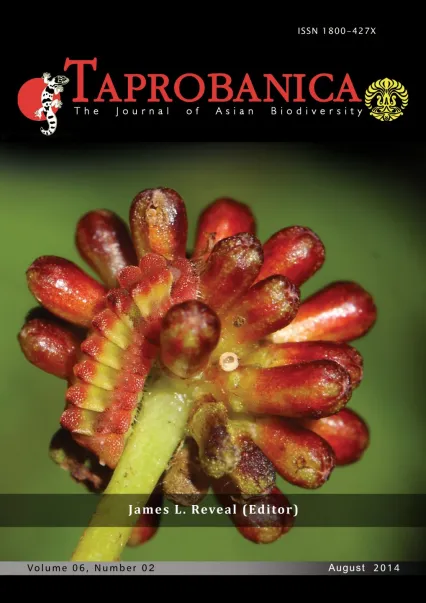

v6i2.140
Volume 6 | Number 2 | November 2014
Major Article
ISSN: 1800-427X (print)
eISSN: 1800-427X (online)
DOI:10.47605/tapro.v6i2.140
Submitted date: 12 March 2013
Accepted date: 18 March 2014
Published date: 30 August 2014
Pp. 83–89, pls. 4–6.
TEMPORAL DIOECISM, MELITTOPHILY AND ANEMOCHORY OF Wendlandia glabrata (RUBIACEAE)
A.J. Solomon Raju & K. Venkata Ramana
*Corresponding author. E-mail: ajsraju@yahoo.com
Abstract
Wendlandia glabrata is a massive bloomer during February–March. Floral characteristics such as diurnal anthesis, white coloured, odorless, tubular flowers with deep seated sucrose-rich nectar conform to psychophily. Nectar is a source of essential and non-essential amino acids for butterflies, inconsistent foragers due to nectar traces in open flowers. This suggests a breakdown of psychophilous pollination. Honey bees consistently collect only pollen. Flies are also inconsistent nectar foragers. Therefore, W. glabrata with psychophilous pollination syndrome is actually melittophilous, and the flowers exhibit Secondary Pollen Presentation (SPP). The flowers are morphologically hermaphroditic but functionally temporally dioecious which promotes outcrossing. Natural fruit and seed set rates are attributed to pollen robbery by honey bees. Anemochory is effective to dispersal of seeds. In situ seedling establishment rate is low due to habit, seasonal herbaceous vegetation, and space limitation. Therefore, we recommend that seedlings be raised in nurseries and transplanted to rebuild populations of W. glabrata.
Key words : psychophily, secondary pollen presentation, tree species, tropical semi-evergreen
Section Editor: James L. Reveal
eISSN: 1800-427X (online)
DOI:10.47605/tapro.v6i2.140
Submitted date: 12 March 2013
Accepted date: 18 March 2014
Published date: 30 August 2014
Pp. 83–89, pls. 4–6.
TEMPORAL DIOECISM, MELITTOPHILY AND ANEMOCHORY OF Wendlandia glabrata (RUBIACEAE)
A.J. Solomon Raju & K. Venkata Ramana
*Corresponding author. E-mail: ajsraju@yahoo.com
Abstract
Wendlandia glabrata is a massive bloomer during February–March. Floral characteristics such as diurnal anthesis, white coloured, odorless, tubular flowers with deep seated sucrose-rich nectar conform to psychophily. Nectar is a source of essential and non-essential amino acids for butterflies, inconsistent foragers due to nectar traces in open flowers. This suggests a breakdown of psychophilous pollination. Honey bees consistently collect only pollen. Flies are also inconsistent nectar foragers. Therefore, W. glabrata with psychophilous pollination syndrome is actually melittophilous, and the flowers exhibit Secondary Pollen Presentation (SPP). The flowers are morphologically hermaphroditic but functionally temporally dioecious which promotes outcrossing. Natural fruit and seed set rates are attributed to pollen robbery by honey bees. Anemochory is effective to dispersal of seeds. In situ seedling establishment rate is low due to habit, seasonal herbaceous vegetation, and space limitation. Therefore, we recommend that seedlings be raised in nurseries and transplanted to rebuild populations of W. glabrata.
Key words : psychophily, secondary pollen presentation, tree species, tropical semi-evergreen
Section Editor: James L. Reveal
- List of Articles & Contents





